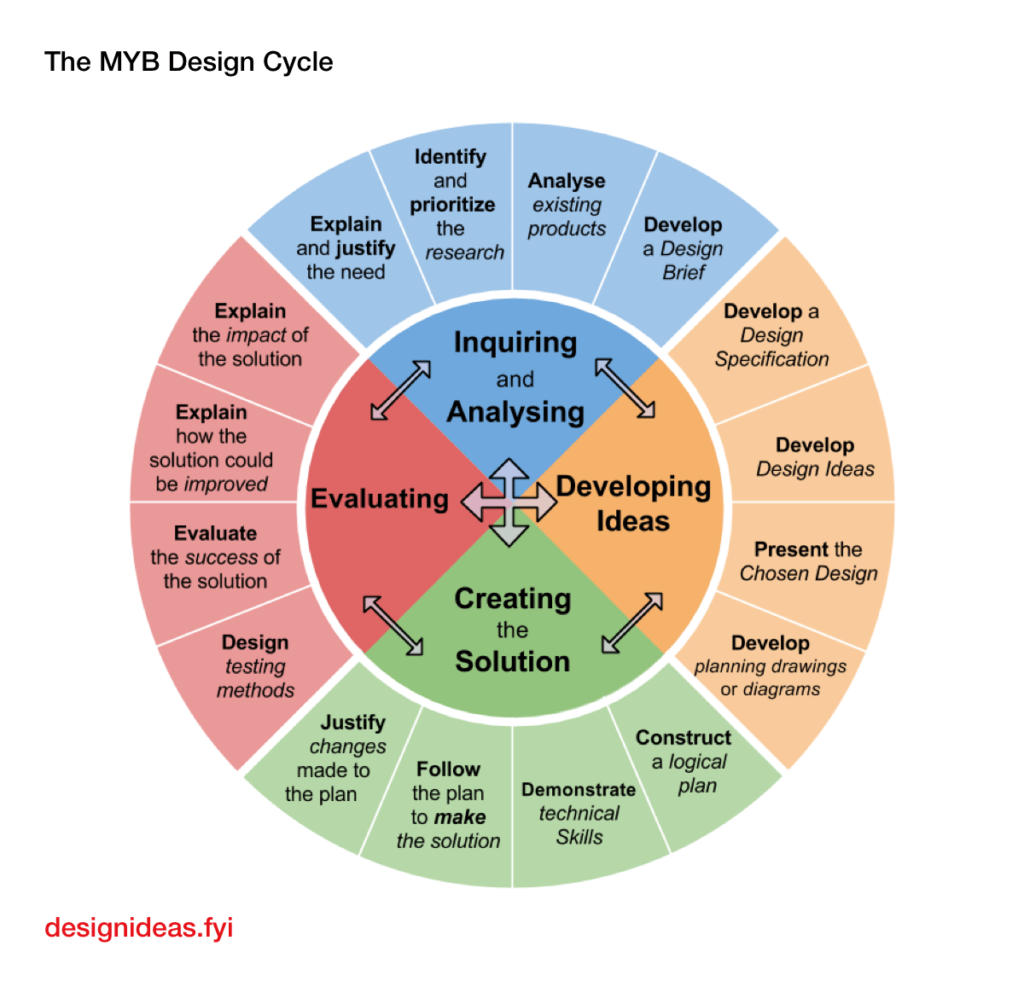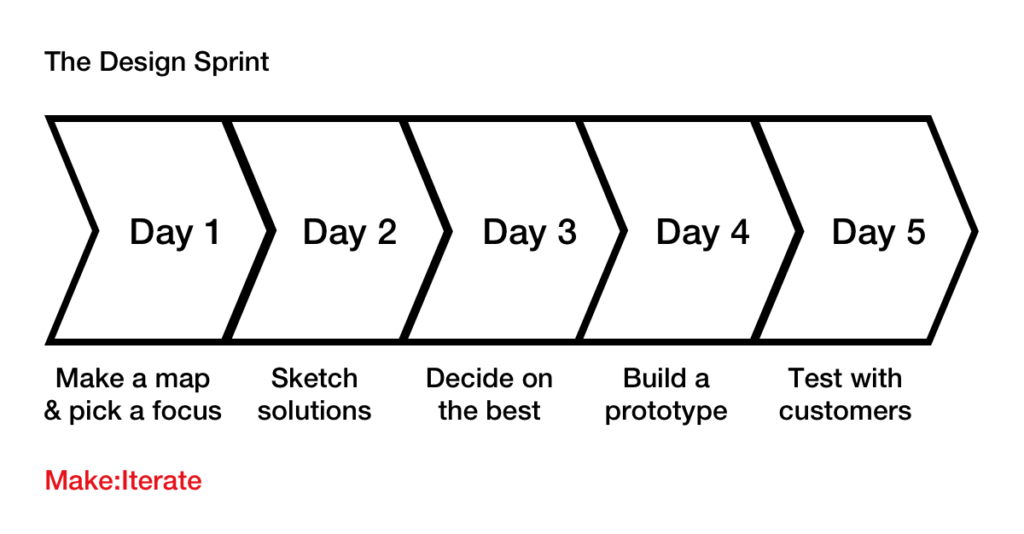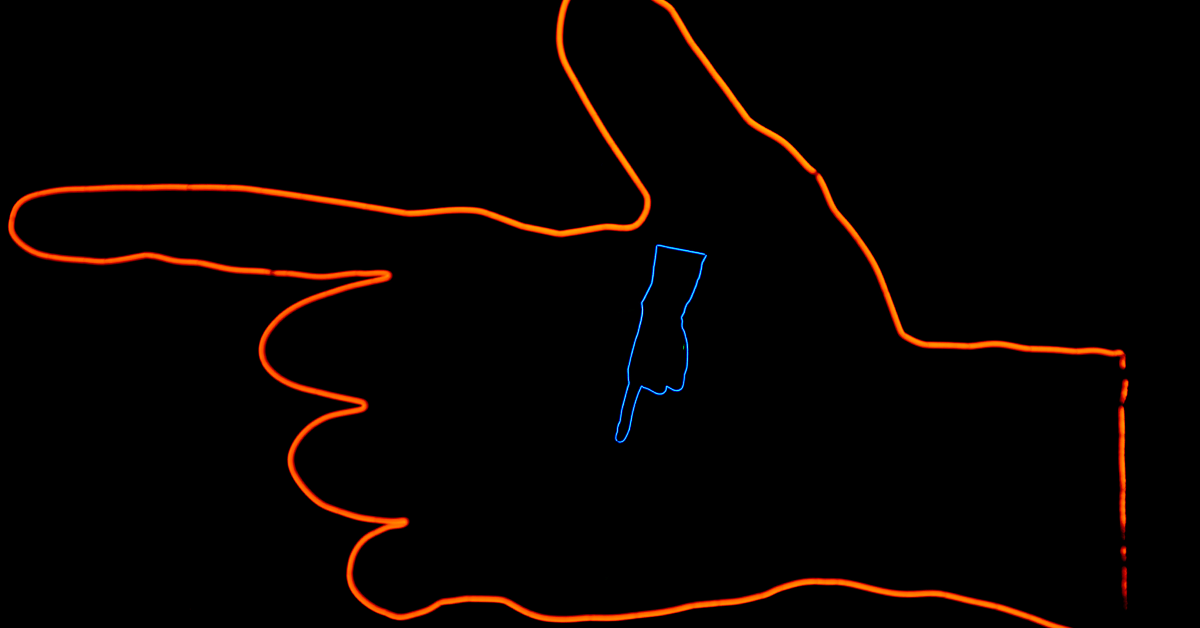An increasing amount of organizations are starting to value Design Thinking as a tool for creative problem solving. For some time now, they’ve recognized that ideas often don’t come from the top – Ideas originate from across the organization.
That’s why many companies now train their employees in Design Thinking to encourage the pursuit of innovative ideas. Once you’ve seen the fun you can have and the ingenuity of Design Thinking workshops, you’ll want to participate in them yourself. Design thinking is contagious.
Design thinking looks fun, and it is fun. It boosts team morale, creates enthusiasm, and gets everyone working toward a common goal.
When you’re comfortable practicing design thinking, you become a valued team member. You become a leader. You can use your skills to solve problems within your team, but you can also teach others your skills and help them solve problems in other areas of the organization.
In this article, I’ll give you an overview of what it’s all about and how you can use it to solve even the most complicated problems.
Did you know?
To help teams implement Design Thinking, we offer bespoke innovation training workshops. Talk with us and find out how we can help transform the way you design your products and services.
Interested? Message us in the bottom right corner or learn more here.
Design Thinking in the Real World
Design thinking is a practice that involves taking action and making things happen.
It’s a highly collaborative method that relies on moving forward, identifying problems, exploring them, and having fun developing solutions.
That’s why it’s best to start no matter where you are in your journey. The more you practice the design thinking framework, the more familiar it will become.
Starting a design thinking project can be daunting, especially when all eyes are on you. But you can take comfort in the fact that the process is about learning, and to learn, you need to make mistakes.
That’s what it’s all about.
So start small, look for ways to solve problems, and begin practicing design thinking as soon as possible.
What Kind of Problems Can Design Thinking Solve?
Design Thinking is versatile and can be applied to various problems in various fields.
It’s proven effective for solving tasks requiring a deep understanding of human needs and complex systems.
It’s known to be effective in solving problems that are poorly defined or complex, i.e. ‘A Wicked Problem’.
Its collaborative and iterative nature allows us to use different skills to cycle through the framework to expand our knowledge and increase our chances of success with each iteration.
Design Thinking acknowledges that we don’t know all the answers and values inquiry and the pursuit of understanding. It is a team sport.
Although some of the most inspiring examples come from healthcare, education and environmental sustainability. In the private sector, it’s just as effective in developing products, functions and services.
Simultaneously exploring problems and solutions makes it effective in solving problems that are not very well defined or complex and difficult to solve.
Here are 6 examples of problems that Design Thinking is known for solving:
- Finding human-centered solutions to business problems.
- Developing new products, features, and services.
- Improving processes, ways of working and operations.
- Designing business strategies and policies.
- Improving the efficiency and engagement of an organization.
- Influencing social change and community initiatives.
Design Thinking can be effective anywhere you want to design something that resonates with a group of people’s needs, behaviors, and attitudes.
What Are Some Examples of Design Thinking in the Real World?
- Developing digital tools to teach financial literacy
- Home toilets for Ghana’s poorest urban dwellers
- Developing a scalable water and sanitation business
- How do you encourage new customers to open a bank account?
What Is the Design Thinking Process?

Theoretically, there are 5 phases in the Design Thinking process: Empathize, Define, Ideate, Prototype, and Test.
In practice, we go through each phase several times, go back and forth, and do some simultaneously.
For example, we can build empathy with our target audience and further define our problem by prototyping and testing an idea with customers.
This flexibility and focus on learning rather than following procedures makes design thinking as effective as it is.
Each stage is essential, and we should not skip the steps entirely but cycle through the stages to move our thinking forward in a way that suits our particular project.
If you’re new to design thinking or the design process and have never practiced iterative design, familiarize yourself with the process, practice it, and then experiment with how you can apply it.
Here’s a more detailed view of each stage of the Design Thinking process:
Empathy
We can develop more informed solutions when we understand our audience and learn firsthand about their issues.
By learning about their habits, preferences, behaviors and attitudes, we can uncover deep insights that lead to real change.
To this end, we conduct user research, interview people, and observe them in their environment.
Define
In the “Define” phase, we evaluate the research and formulate the problem we want to solve.
We identify noteworthy patterns, themes, and insights that could guide our thinking throughout the project.
To do this, we organize the information, highlight key themes, and distill them into problems, opportunities, and insights.
Ideate
Exploring a broad range of possible solutions allows us to explore the issues discovered in the previous phase and speculate on the most effective solution.
By developing ideas, talking about them, and critiquing them, we can build our understanding of the problem and the type of solution needed.
To this end, we engage in creative ideation activities, usually in a group or participatory design workshop.
Prototype
Once we’ve developed a set of possible solutions, we need to build a prototype to share with the end user to gather further feedback.
A prototype needs to be the simplest possible execution of the idea that helps us gather more customer insights.
To do this, we look for ways to simulate the experience or functionality, sketch our ideas, and share the images.
Test
Now that we have a prototype, we need to take it to our customers, ask them questions and observe how they interact with it.
To do this, we share the prototype with them, ask them some questions and ask them to do some tasks.
Then we take the feedback, do another prototype iteration and test it again.
Get the most out of the design thinking process by cycling through the process several times.
Each time you go through the process, you create another iteration of your idea, and it gets better in quality each time.
This way, you can build a knowledge base and validate your findings before committing to developing an expensive product.
Large Projects vs Small Projects
You can apply design thinking to projects of all shapes and sizes.
Sometimes it’s enough to start with a specific problem or outcome you want to achieve and go through the framework once to get the desired results.
For larger projects, you should divide the project into manageable sections and progressively go through the framework multiple times for different parts before bringing everything together at the end.
For example, suppose your project is to improve employee engagement or collaboration around a particular idea. In that case, developing an innovative solution and testing it for a few weeks may be better before revisiting the project, reviewing the data, and moving on.
When redesigning an extensive application, website, or platform that includes multiple sections or functional categories, it would be best to break it into smaller parts and work on each individually.
Why Design Thinking Works
Design thinking works because it’s highly collaborative.
It emphasizes on-the-go learning through direct observation.
It values making decisions based on evidence, and wherever we make decisions based on evidence, we can have more confidence in the decisions we make.
Design thinking works because it attracts people and encourages engagement because of its interactivity and fast-paced nature.
It also acknowledges that you might not get it right the first time and that it’s okay to try again, incorporating new evidence until you get it right.
Because it’s an iterative model, our chances of success increase with each iteration.
Benefits of Design Thinking
Design thinking can accelerate time to market, stimulate creative thinking across the organization, and teach your team new skills.
You can use design thinking on internal projects to improve processes and procedures. Use it on external projects to create a new product, feature or service, or it can help develop strategies and ways of working.
Step by Step on How to Use Design Thinking to Solve Problems
The best way to learn Design Thinking is to experience it for yourself.
It’s a hands-on process that requires commitment, energy, and creativity.
My advice is to get started right away and decide for yourself whether or not it’s suitable for your organization or project.
As you practice, you’ll gain more experience and understand why we do the things we do, and then you can tweak the approach, experiment with activities, and make it work for you.
Choose a Project, Problem, Need or Goal
The first step is to select a project. You may have an idea of an outcome you want to achieve, a problem you want to solve, or a change you’d like to see.
Here’s a broad set of starting points demonstrating that goals and outcomes can be specific, general or poorly defined:
- We want to redesign our mobile experience.
- We want to reduce our environmental footprint.
- We want to understand customers and solve their problems.
- We want to encourage colleagues to celebrate each other’s successes.
Getting clarity and focus on goals and outcomes can be part of the discovery process; however, the clearer you are in advance, the more focused you can be during the workshops.
To ensure you get buy-in from your stakeholders, involve them in the opportunity identification process.
If you’ve got the support of your stakeholders, you’re more likely to get the time, space, and people you need for the project. They’ll also be excited to see the outcome when you’re done.
Alternatively, if this is your first experience, choose something small that you’ve got control over for your team, or help another team with a lower-stakes project so you can practice.
Choose a Team of People to Work With You
The more diverse your team is, the more diverse the outcome will be.
Different perspectives benefit the Design Thinking approach and are excellent for creative thinking.
Here are some considerations you need to make when choosing your team:
- How diverse can you make the team in skills, values and beliefs?
- What kind of dynamic do different combinations of personalities bring?
- Can you get a variety of SMEs: Tech, marketing, research, UX design?
- Who will help you gain traction within the organization?
It doesn’t matter if the participants have never participated in a Design Thinking process before; this can be an excellent learning opportunity.
However, if you have a new team, it’s a good idea to have a strong facilitator, teach some skills beforehand, or choose a project that allows them to experiment without fear of failure.
When you’ve selected your team members, arrange a session to brief them on the project.
Explain to them what Design Thinking is, share some case studies and details about the project so far, explain why they’re valued team members, and discuss ways of working and how you’ll foster a fun and engaging working environment.
Plan and Prepare for the Project
The design process is fluid and flexible.
The specific activities and timings will change as you move through the process. That said, you can time box each phase of the project and draft a schedule so you have a guiding framework; then, as you progress, you can make changes to your approach as and when you feel the need.
When planning a design thinking project, some of the things you need to consider are:
- What problem area do you want to explore?
- Who’ll be involved?
- When do you want the project to take place?
- How long do you want the project to last?
- Where will it take place?
- What materials will you need?
- What activities will happen at each phase?
It’s best to answer some of these questions with your team or stakeholders so you can confirm they agree with the direction and that you’re focusing on the right things.
Conduct the Workshops and Get the Work Done
Now comes the fun part, conducting the workshops.
You can set the agendas for each day in advance and use them as a guide that you can adjust and change depending on what you learn as you go along.
It’s best to start each day with a catch-up. Talk about what you have in mind for the day. Invite your team to share their suggestions on how to maximize your time and the value of the activities.
Meet again at the end of the day for a debrief and discuss how it went, what you learned, and what you want to do the next day.
Go through each phase of the framework and try to understand your audience, choose a focus, develop ideas, prototype, get customer feedback, rinse and repeat as many times as necessary.
Towards the end of the project, you should begin to summarize the process and approach and document your findings so that you can share them with the business and make plans to develop and deploy the solution.
This can be done using a series of decision-making frameworks, or you can discuss and prioritize ideas based on the criteria identified during the project.
For example, in the initial phase, you may have decided that your idea must be sustainable, cost-effective, and accessible. When you review your ideas at the end, you should map them to these criteria to see if they meet the requirements or if gaps need to be filled.
This summary phase is essential to put what you’ve learned into a concise case study that you can use to tell the story of the complex problems you want to solve and the potential solution you wish to develop.
You can use this to show the organization the value of the process you went through. This is your chance to share what you learned and explain why you chose the solutions you did and the impact they had on the end users. The more data and evidence you can use to tell your story, the more impactful it’ll be.
Ultimately, this summary should convince the people who’ll help you maintain momentum and get the necessary resources to build and launch your solution.
Release Your Idea Into the Wild
You get the best data when you release your creative solution into the wild.
You want to see how users experience it in practice. Does it achieve the results you were hoping for? What impact does it have on the target audience?
This is an excellent opportunity to gain additional insights that you can use to improve the solution.
Find Opportunities to Improve Your Idea and Repeat the Cycle
If you find that parts of the idea need improvement or the idea could have been more successful, you can use the data collected to choose another focus and repeat the process.
This iterative approach helps us identify opportunities for true innovation and develop breakthrough products and services.
Measure the Success of the Activities
When you finally get your idea out into the world, you’ll need to collect data on its performance. This data can tell you if your idea has succeeded and where it needs to improve.
Then you need to periodically review the progress of the project and evaluate the data to decide what tweaks and adjustments need to be made or if the project is successful enough to continue.
We’ll come back to measuring success further along in this article.
What Are Some Alternative Problem-Solving Approaches?
The Design Thinking methodology has become popular in recent years; it has experienced a resurgence.
As markets and industries become more competitive and innovating has become necessary, companies are looking for new ways to innovate.
Since Design thinking is the name given to the process of thinking like a designer. There are a few other design approaches worth taking a closer look at.
Note that these frameworks are based on the design process, so they all have similar phases, values, and outcomes.
After you have tried them all and become familiar with them, you’ll likely develop your own process that is an amalgamation of all of them. Then you’ll be a pro.
Here are three human centered design alternatives to the Design Thinking framework:
The Design Cycle

The Design Cycle is a 4-phase process broken into multiple steps designed to help students learn and apply the human-centered design process.
Double Diamond

The Design Council developed the Double Diamond as a method for designing solutions in a wide range of contexts and sectors.
Design Sprint

The Design Sprint is a framework often used by software development teams to accelerate identifying opportunities and creating solutions.
How Can We Measure the Success of Design Thinking?
This is a question that gets asked a lot.
Organizations are used to measuring the success of their work to determine whether or not they are using their time efficiently and adding value in the right areas.
The answer to this question depends on the nature of the project and what impact you want to have.
It’s similar to how you would measure another type of activity.
Measure the Design Thinking Process
Do you want to measure the process so you can report on the activities, the time they take, and the number of people involved? If so, you could look at the number of workshops conducted, prototypes created, features on the roadmap that emerged from DT workshops, and the number of ideas produced.
Measure the Impact of Your Solution on Customers
Do you want to measure the impact on customers using customer feedback, survey responses, retention and adoption rates, task completion and time on task?
Measure the Impact of Design Thinking on the Organization
Would you like to measure the effect on the organization? The number of employees trained in Design Thinking or the number of projects completed?
Measure Your Traditional KPIs
You can measure the impact of the solution on your traditional KPIs.
Did the solution produce the desired result? Did it generate a profit, was it well received, and did it impact your net promoter score or OKRs?
You can also compare solutions created through Design Thinking activities with solutions created through other methods by looking at your roadmap and highlighting the projects that came about through Design Thinking and those that didn’t. See how many of them there are and how they perform relative to each other.
In reality, you need to mix measures, depending on what you want to know.
Think about what outcomes you want to achieve by introducing Design Thinking into your organization and pick from the metrics above to assess whether it’s working for you.
Conclusion
Design thinking is a powerful tool that can help you achieve your desired outcome no matter what problem you’re facing. The more you practice design thinking, the more familiar it will become. And remember, Design Thinking is versatile and can be applied to various problems in various fields. So don’t hesitate to give it a try the next time you’re stuck on a project!


